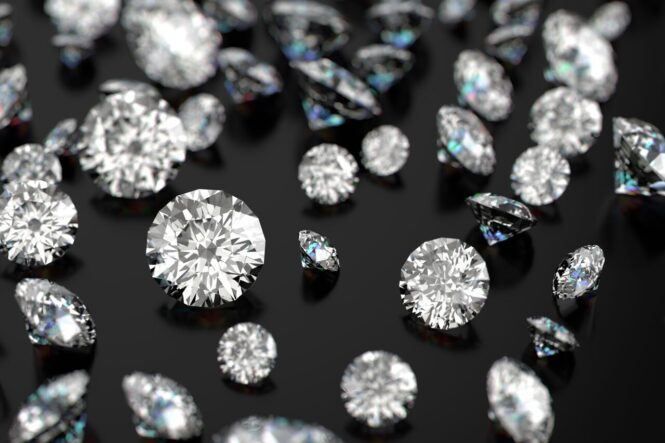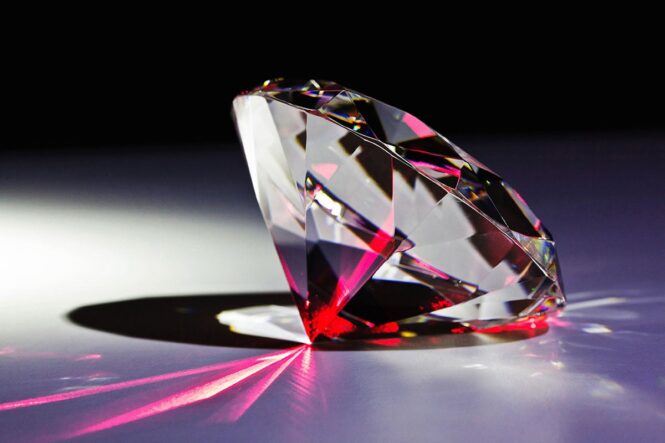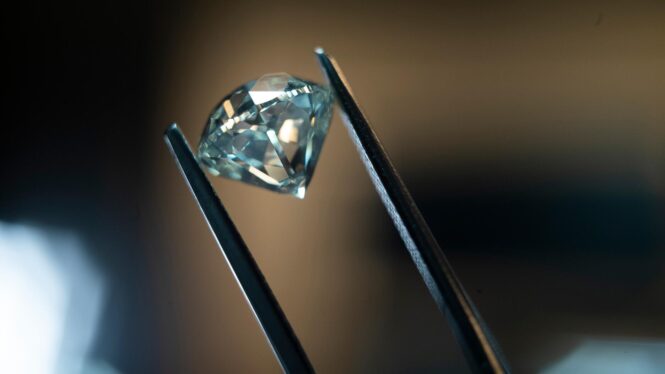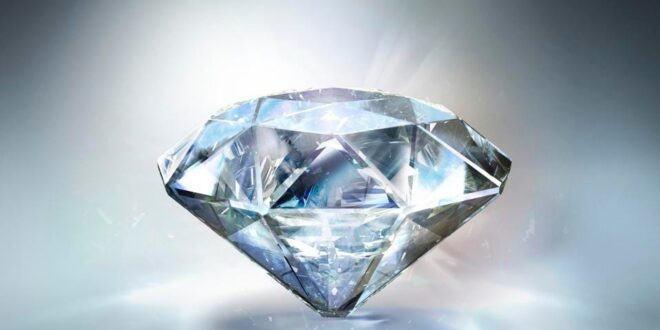Diamonds are the most precious and coveted gems in the world. Their remarkable beauty, hardness, and rarity make them the ultimate symbol of love and luxury. The history of diamonds is long and fascinating, with tales of discovery, trade, and romance that have captured the imagination of people for centuries.
In this article, we will explore the world of diamonds, from their formation deep in the earth’s crust to their transformation into exquisite jewelry. We will also delve into the challenges and controversies surrounding the diamond industry, including the issue of conflict diamonds, and the growing popularity of PCD, or polycrystalline diamond, as a new alternative to natural diamonds.
The Formation of Diamonds

Diamonds are formed deep beneath the earth’s surface, under extreme heat and pressure. They are created from carbon atoms that have been subjected to enormous pressure, as much as 725,000 pounds per square inch, and temperatures of up to 2,200 degrees Fahrenheit. This process occurs over millions of years, as carbon-rich material is slowly buried and subjected to these extreme conditions.
Diamonds are typically found in volcanic pipes, which are vertical structures that extend deep into the earth’s mantle. When volcanic activity brings diamonds closer to the earth’s surface, they can be mined and extracted. The largest diamond mines in the world are located in Africa, Australia, Russia, and Canada.
The Mining and Production of Diamonds
Diamond mining is a complex and often controversial process. It involves a combination of open-pit and underground mining, as well as sophisticated machinery and technology. The mining process is labor-intensive and often dangerous, with workers facing difficult conditions and risks such as cave-ins and rock falls.
Once diamonds are extracted from the earth, they go through a rigorous process of sorting, cleaning, and grading. Diamonds are sorted by size, shape, and quality, and then cleaned to remove any impurities or blemishes. Finally, they are graded by independent laboratories based on the 4Cs: carat weight, cut, color, and clarity.
The Art of Diamond Cutting

Diamond cutting is a skilled and intricate process that transforms rough diamonds into dazzling gems. Diamond cutters use special tools and techniques to shape and polish diamonds, maximizing their brilliance and beauty. The most common cut for diamonds is the round brilliant cut, which is designed to maximize the diamond’s fire and brilliance.
Diamond cutting is also an art form, with cutters striving to create unique and creative designs that showcase the diamond’s natural beauty. Some of the most famous diamonds in the world, such as the Hope Diamond and the Cullinan Diamond, are renowned not only for their size and quality but also for their exquisite cutting and craftsmanship.
The Jewelry Industry and the Popularity of PCD
The diamond industry is a multibillion-dollar global business, with diamonds being used in everything from engagement rings to high-end watches and fashion accessories. However, the industry has also faced controversy and criticism, particularly in relation to the issue of conflict diamonds, which are diamonds that have been mined and sold to finance armed conflict and human rights abuses.
In recent years, there has been a growing trend towards using alternative materials in jewelry, including PCD, or polycrystalline diamond. PCD is a synthetic diamond that is made from multiple diamond crystals that have been fused together under high pressure and temperature. It offers many of the same properties as natural diamonds, including exceptional hardness and durability, but is also more affordable and sustainable.
Diamond Industry Is Constantly Evolving

The diamond industry is constantly evolving, with new technologies and trends shaping its future. One of the most significant developments in recent years has been the rise of lab-grown diamonds, which are created in a laboratory rather than being mined from the earth. These diamonds offer a more sustainable and ethical alternative to natural diamonds, as they do not involve environmental damage, human rights abuses, and other controversies associated with traditional diamond mining.
Lab-grown diamonds are also more affordable than natural diamonds, which makes them an appealing option for consumers who are looking for high-quality jewelry at a lower cost. They are chemically and physically identical to natural diamonds and are available in a range of sizes, colors, and cuts.
The growth of the lab-grown diamond industry has been fueled by advances in technology, which have made it possible to produce diamonds that are virtually indistinguishable from natural diamonds. These diamonds are grown using a variety of techniques, including chemical vapor deposition and high-pressure, high-temperature synthesis.
While lab-grown diamonds are still a relatively small segment of the diamond market, they are expected to continue to grow in popularity in the coming years. Some industry experts predict that lab-grown diamonds could eventually account for up to 30% of the diamond market.
The Future of the Diamond Industry
As the diamond industry continues to evolve, experts predict several key trends that will shape its future. Here are a few of the most significant developments to watch for in the coming years:
- Sustainability: As consumers become more conscious of environmental and social issues, the demand for sustainably sourced diamonds will continue to grow. This includes both natural diamonds that are responsibly mined and lab-grown diamonds that have a lower carbon footprint.
- Technology: Advances in technology will continue to revolutionize the diamond industry, with new techniques for growing diamonds, cutting and polishing, and identifying synthetic diamonds. This will lead to greater efficiencies and lower costs, making diamonds more accessible to a wider range of consumers.
- Customization: Consumers are increasingly looking for personalized and unique diamond jewelry, and the industry is responding with a growing trend toward customization. This includes the ability to select specific diamonds and have them set in custom-designed settings, as well as the use of 3D printing technology to create one-of-a-kind pieces.
- Online Retail: The growth of e-commerce has already had a significant impact on the diamond industry, and this trend is expected to continue. More and more consumers are purchasing diamonds online, and retailers are responding with innovative online shopping experiences that provide a high level of convenience and customization.
- Investment: Diamonds have traditionally been seen as a store of value and long-term investment, and this trend is expected to continue. As more investors look for alternative investments outside of traditional stocks and bonds, diamonds are likely to become an increasingly popular option.
Overall, the future of the diamond industry looks bright, with continued growth and innovation in a range of areas. Whether you are a consumer looking for a beautiful piece of diamond jewelry, or an investor seeking a long-term store of value, diamonds will continue to be a popular and enduring choice.
Conclusion:
Diamonds have captivated people for centuries with their extraordinary beauty, rarity, and symbolism. However, the diamond industry has also faced significant challenges and controversies, including the issue of conflict diamonds and the environmental and social impact of traditional diamond mining.
As a result, the industry is evolving, with new technologies and trends shaping its future. From the rise of lab-grown diamonds to the growing popularity of PCD, the diamond industry is undergoing a transformation that is making it more sustainable, ethical, and accessible to a wider range of consumers.
Whether you prefer natural diamonds, lab-grown diamonds, or PCD, there is no denying the enduring appeal of these remarkable gems. They will continue to be a symbol of love, luxury, and beauty for generations to come.
 Imagup General Magazine 2024
Imagup General Magazine 2024



